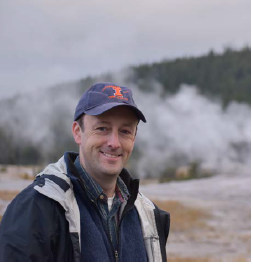
Schroeder will speak on "Endless Worms Most Beautiful" at 4:10 p.m. in Room 122 of Briggs Hall, off Kleiber Hall Drive. Plant nematologist and assistant professor Shahid Saddique of the Department of Entomology and Nematology will serve as the host. The event is open to all interested persons.
Schroeder's website indicates that he "makes new discoveries on the biology of nematodes, one of the world's most abundant group of animals. His work identifies how nematodes survive difficult environmental conditions, which helps control parasitic nematodes and reveals how higher animals like humans deal with stress."
"My laboratory studies the development and anatomy of diverse nematode species to understand the plasticity of structure within species and the generation of novel forms across evolution," Schroeder explains in his abstract. "Caenorhabditis elegans is a bacterial feeding nematode widely used as a model for understanding basic cellular and molecular processes. Under specific environmental stressors, C. elegans can enter a developmental switch into a stress-resistant dauer stage. During the entry to dauer, several tissues rapidly remodel. We discovered a new neuronal remodeling phenotype during dauer formation and have described several mechanisms controlling this phenotype."
"In addition to neuronal remodeling," he says, "C. elegans also undergoes remodeling of epithelial stem cell-like 'seam cells.' We have identified a group of extracellular proteins that regular the seam cell remodeling process. While C. elegants research is blessed with numerous tools, this nematode represents only one of thousands of species inhabiting wide-ranging aquatic and terrestrial habitats. Together with their relatively simple anatomy, nematodes are an ideal taxon to understand the evolution of anatomy."
Schroeder adds: "In addition to our work in C. elegans, we are exploring the mechanisms controlling new anatomical forms. For example, we recently found that the seam cell homologs in the cyst nematode Heterodera glycines have increased proliferative capacity compared with C. elegans. This increased cell division likely contributes to the atypical lemon-shape of H. glycines. Finally, we are beginning a collaboration with the NIH-funded WormAtlas to expand their offerings beyond C. elegans and help bridge the divide between the sometimes-disparate research communities."
Schroeder, who joined the Department of Crop Sciences in 2013, received his bachelor of science degree in chemistry from Earlham College, Richmond, Ind., in 1998, and his doctorate in plant pathology from the University of Wisconsin-Madison in 2008. He then served as a postdoctoral fellow in the Department of Genetics, Rutgers University, New Jersey, from 2008 to 2013.
Community ecologist and assistant professor Rachel Vannette is coordinating the seminars, which are held every Wednesday at 4:10 p.m. in 122 Briggs Hall. (See schedule.)
Attached Images:
